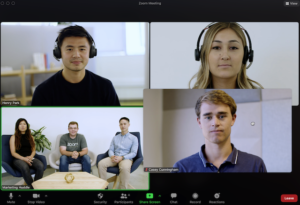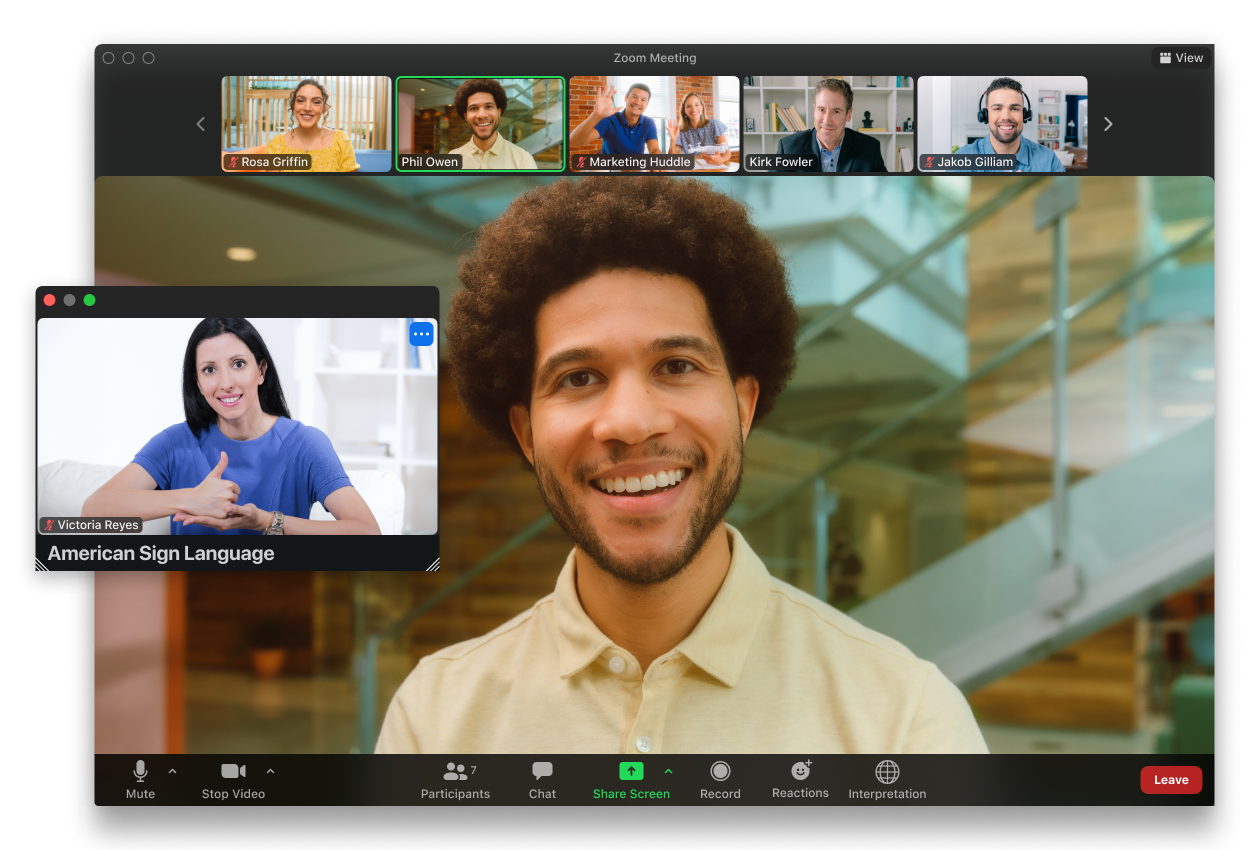 Remote learning has it’s many benefits, one being convenience. but it’s not all too convenience if you are deaf or heard of hearing. In the past, features for the deaf and hard or hearing were almost non-existent. Although there’s still a long way to go to being fully inclusive, Zoom has been making some headway with a few features including the latest: the sign language interpretation view for Zoom Meetings and Webinars.
Remote learning has it’s many benefits, one being convenience. but it’s not all too convenience if you are deaf or heard of hearing. In the past, features for the deaf and hard or hearing were almost non-existent. Although there’s still a long way to go to being fully inclusive, Zoom has been making some headway with a few features including the latest: the sign language interpretation view for Zoom Meetings and Webinars.
According to a recent Zoom blog, “Unlike other meeting layouts, the interpreter can be isolated and independent from gallery views, screen shares, spotlights, etc., but is still part of the meeting itself. This enables translators to swap duties or come and go without disrupting other participants, which can be especially helpful for all-day or multi-hour events.”
“Should the interpreter need to interact verbally with an instructor or the class, the “Allow to Talk” feature lets hosts bring an interpreter into the main session (or gallery view) and enable their microphone for discussion. What’s more, participants needing this service can resize or relocate the interpreter’s video window independently without ever leaving a meeting.”
Beth Wagmeister, CEO of Workplace Accessibility Group, or “WAG” and the Inclusion Chair at South Florida Tech Hub, warns that the misconception is that they are providing American Sign Language interpreters like a video relay interpreter. You can’t click on a button and an interpreter p[ops up. Although you will be able to allow the interpreter to be moved around the screen, positioned best for visibility, and allowed to pin even though the interpreter isn’t talking.
“It’s important for accessibility to have a person have the ability to control when and where they view the interpreter so that is an accessibility win, however, I don’t want people to be misled that that means zoom is providing American Sign Language interpreters,” says Beth.
“Previously, you could only pin one video screen while on a Zoom call. For meetings (those are usually in speaker mode, which keeps whomever is speaking highlighted), users can keep more than one speaker’s video centered, so there can be several videos pinned to the main screen. Only you as the user would see the multiple videos, so you can choose to keep an interpreter video pinned next to the main speaker, while other call participants might choose to just have the speaker centered on their screens.
 A few other helpful features for the deaf and hard of hearing community are Zoom Phone’s Voicemail transcription service, Zoom’s Live Transcription, and the
A few other helpful features for the deaf and hard of hearing community are Zoom Phone’s Voicemail transcription service, Zoom’s Live Transcription, and the
Zoom Phone’s Voicemail Transcription service enables voice messages to be transcribed and read at the user’s convenience. When they can’t physically answer a call, they can read the message for pertinent information and choose when and how to respond.
Live Transcription allows users to generate an automatic, visual transcript from meeting audio that can be activated by any and all meeting participants.
Custom Gallery View enables users to click and drag videos to create a custom video order. Your custom order will be seen only by you, or the host can deploy their custom view to all participants. This order can be released and the order will revert to the default.
To learn more about Zoom accessibility features, visit https://explore.zoom.us/en/accessibility/


